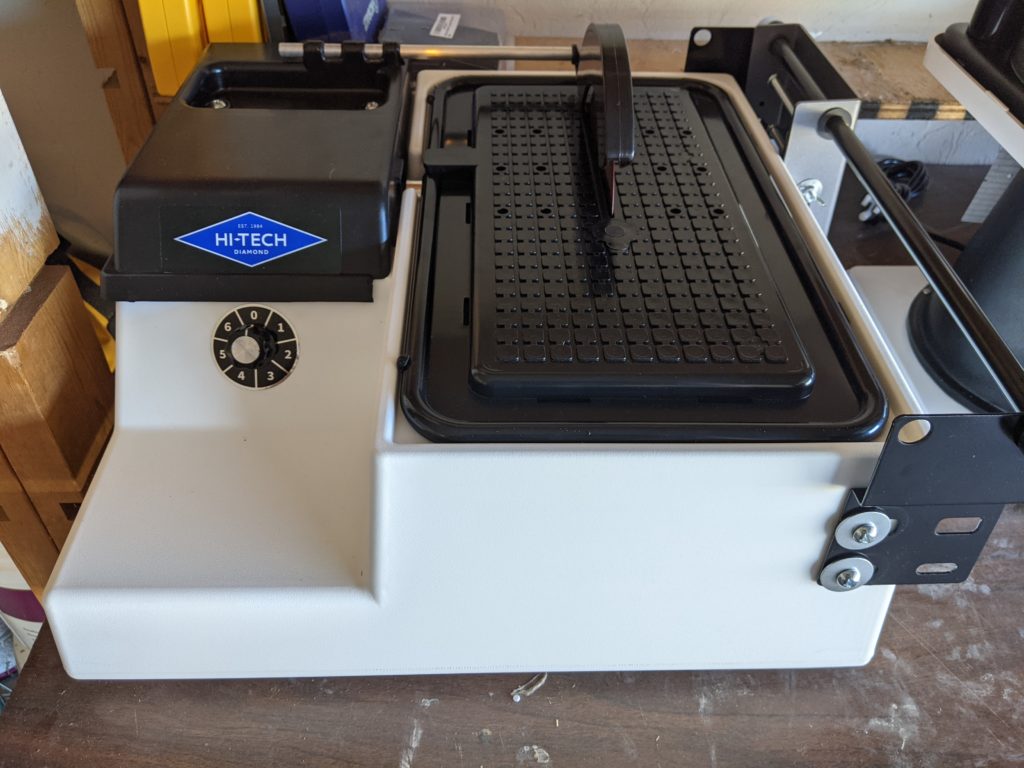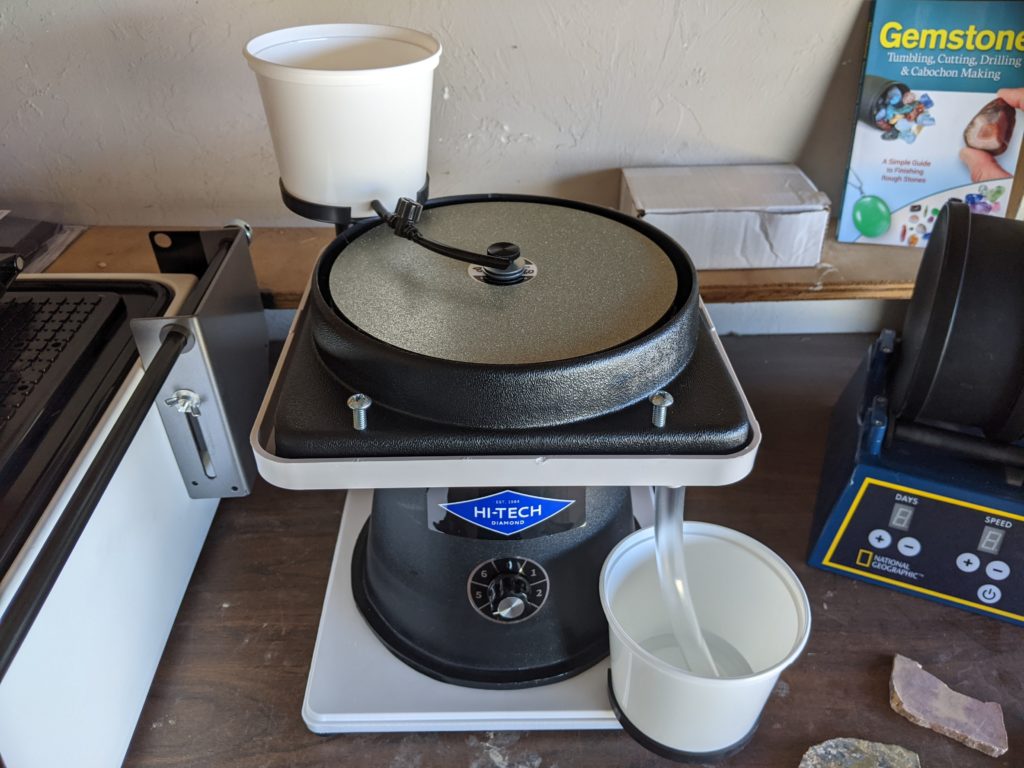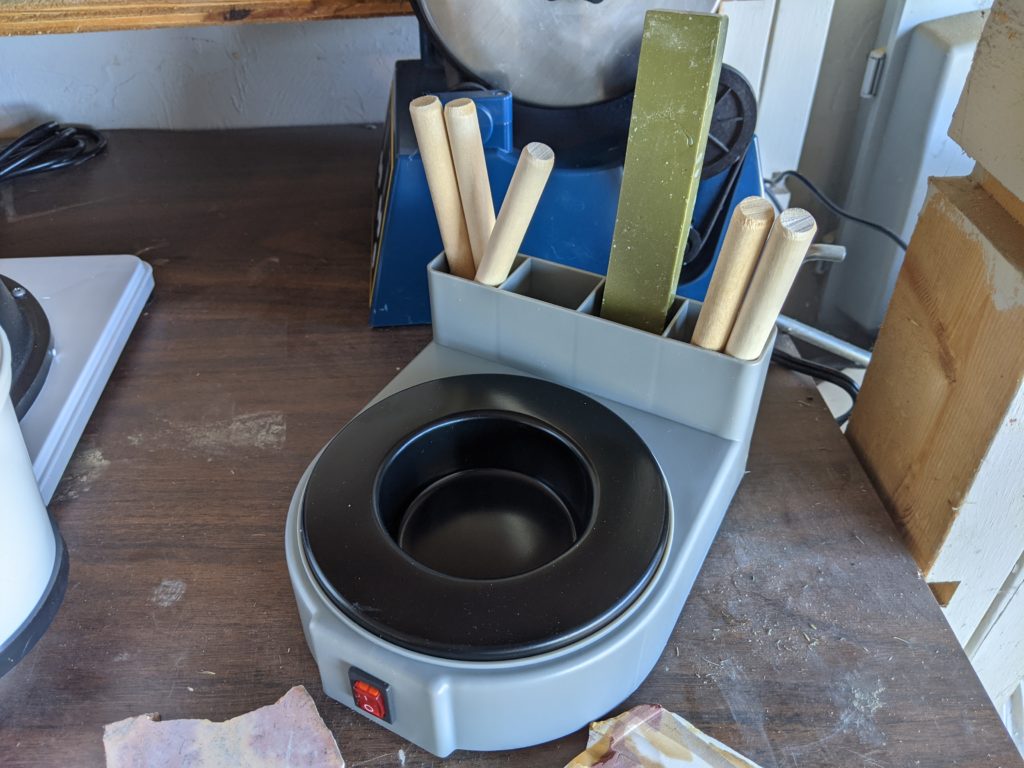I’ve spent a lot of time in the field, and over the years I’ve accumulated quite a bit of gear to take with me. I’ve invested quite a bit of money into this stuff and I’ve had the opportunity to thoroughly test it in the field, so I know what works and what doesn’t work for me. I have also gained quite a bit of knowledge about rock tumbling through first-hand experience and extensive research.
These items aren’t necessarily the most expensive or highest-end products on the market. When I research products I’m almost always about value – what is the best use of my money? I usually end up buying above average gear that performs well in the field and doesn’t break the bank. This is the stuff that I use.
Best Rockhounding Gear
Rock Hammer – A staple of every rockhound’s kit. The Estwing rock pick is by far the most popular rock hammer for a reason. I’d also recommend getting a belt sheath like this one. See my full write-up here.
Hiking Day Pack – My Osprey day pack has served me well for over 10 years, including my geology field camp. Lightweight, comfortable, and versatile. See my full write-up here.
Field Shovel – Great for digging shallow holes and pockets and as a versatile tool in the field.
GPS Unit – If you’re heading out away from civilization it’s always smart to have a reliable and easy-to-use GPS unit. Stay safe and know where you’re going!
UV Flashlight – Not a must, but definitely a fun addition to your kit. Many rocks and minerals react to varying wavelengths of UV light. Especially fun to use in the dark!
Chisel – To break up hard rock, expose fresh surfaces, and open up pockets in outcrops. Best when used in conjunction with a small crack hammer like this one from Estwing.
Hand Lens – A must-have for any aspiring geologist or rockhound. Get a closer look at the tiny grains and crystals in your rocks without the need for an expensive microscope.
Collecting Pouch – A handy little bag that you can attach to your belt or backpack. Keep all of your best finds in an easy-to-reach place without filling up your pockets.
Field Notebook – Great for taking notes in the field, even in inclement weather. These books are specially designed to handle the rain and damp without falling apart.
Mohs Hardness Testing Kit – This handy, portable kit is great for testing the hardness of your rocks and minerals at home or in the field. Great for anyone who wants to test their finds for identification purposes.
Books & Magazines
Rock & Gem Magazine – This monthly magazine has tons of great articles from knowledgeable, respected geologists and gemologists. It covers rock collecting, faceting, field trip ideas, projects for kids, and more. It’s a great way to stay up to date and engaged with the rockhounding hobby. It’s a must for any aspiring rockhound!
Smithsonian Handbooks: Rocks & Minerals – This book is the most useful I have found for help in identifying rocks and minerals. It has gorgeous pictures and nice descriptions of hundreds of rocks and minerals. The only drawback to a book like this is that it can sometimes be difficult to sift through to find a rock that matches yours.
National Audobon Society Field Guide to Rocks and Minerals – Another great resource for help identifying your rocks and minerals. This one is geared more towards practical identification and is easier to carry and use on the fly while out in the field. Complete with great pictures and descriptions of hundreds of rocks and minerals.
State-By-State Rockhounding Books – I have compiled lists of books for every state in my State-By-State rockhounding articles. Just click on your state, and in the article you’ll find a list of the best rockhounding books available.
Best Tumbling & Lapidary Gear
Rock Tumbler – My daughter and I have been using the National Geographic rock tumbler for a while now and we really like it. I recommend getting the version with 3-pound barrel. The only downside is that the grit & polish that comes with it isn’t very good, so I’d recommend getting this polish instead. See my full write-up here.
Tumbling Media – You can use ceramic pellets or plastic beads as tumbling media. I personally like to use Polly Plastic’s ceramic pellets because I can reuse them and I seem to get better results.
Lapidary Trim Saw – To take your enjoyment of rocks and minerals to the next level, I highly recommend getting some lapidary equipment. This one from Hi-Tech has served me well and is a great piece of equipment for the casual enthusiast. See my full write-up on lapidary equipment here.

Flat Lap – Another great piece of equipment from Hi-Tech, this machine lets you polish the face of your stones and even make your own cabs. I have written more about it in my article on lapidary equipment here.

Cabbing Machine – If you want a serious piece of cabbing equipment, look no further than the Cab King 6″ or 8″ models. These are some of the best pieces of lapidary equipment you can buy, and are very affordable when compared to similar products.
Wax Dopping Station – A nice wax dipping station makes working with your rock slabs and cabochons much easier and enjoyable. This station from Hi-Tech is easy to use and designed for practical use.

Online Tools & Resources
Gaia GPS – The best mapping tool I have found for planning any outdoor excursion, including rockhounding. Their maps are as accurate and complete as can be, and integrate easily with most GPS units. If you are into planning your routes and knowing exactly where you’re going and where you are, I can’t recommend Gaia GPS enough.
Minsocam Rock Key – A very handy and well thought-out online tool for use in rock and mineral identification. It’s not perfect and doesn’t include everything you might find on your adventures, but it is a great place to start and a good example of how to take a methodical approach to rock identification.
















